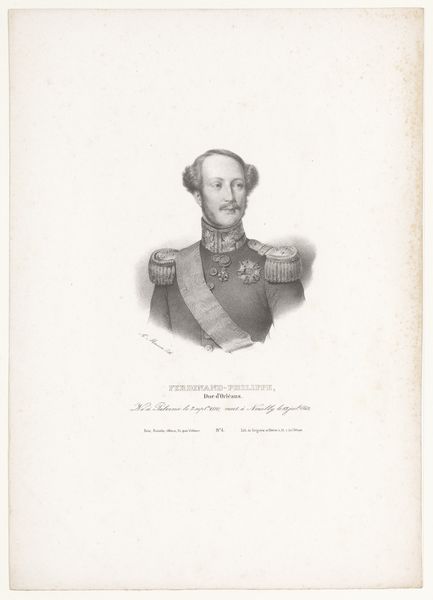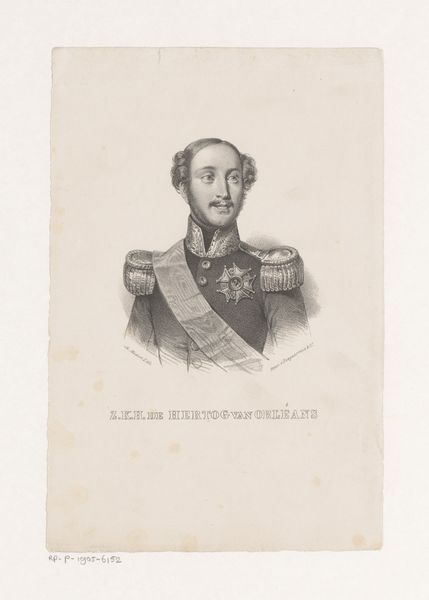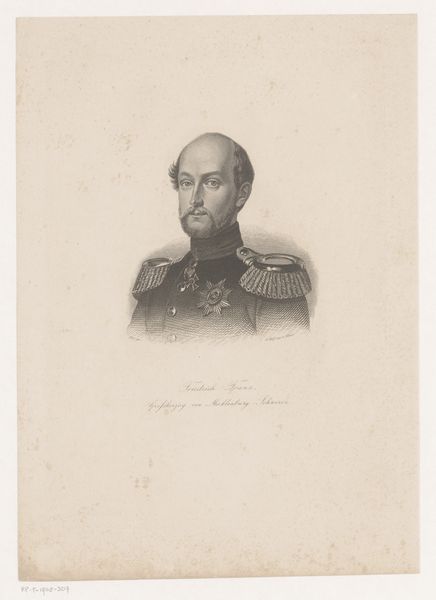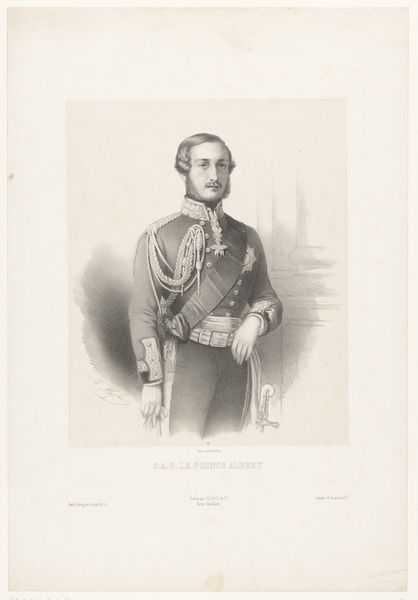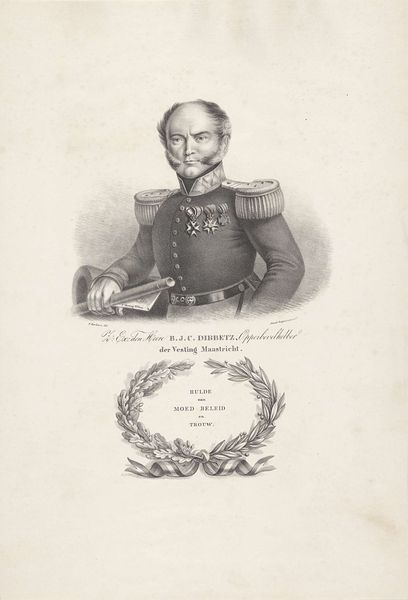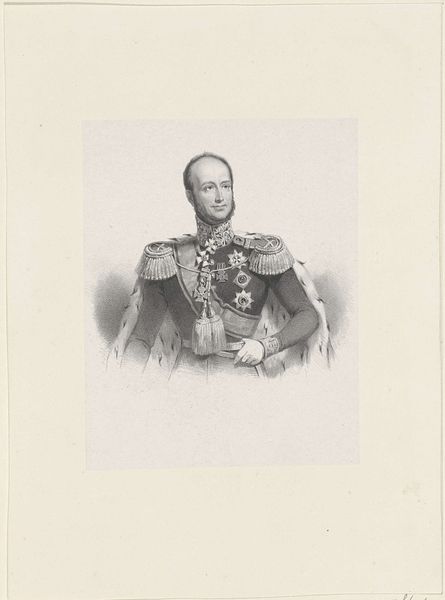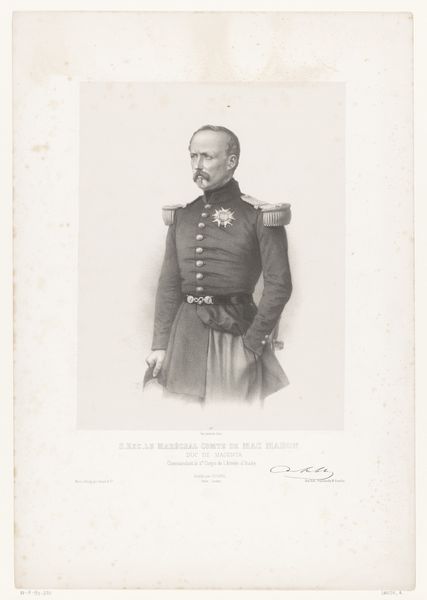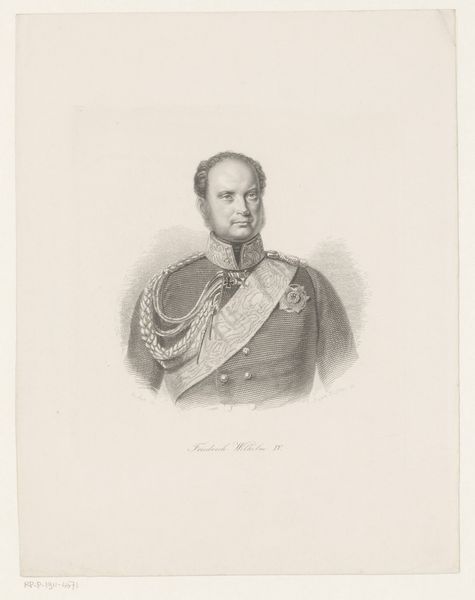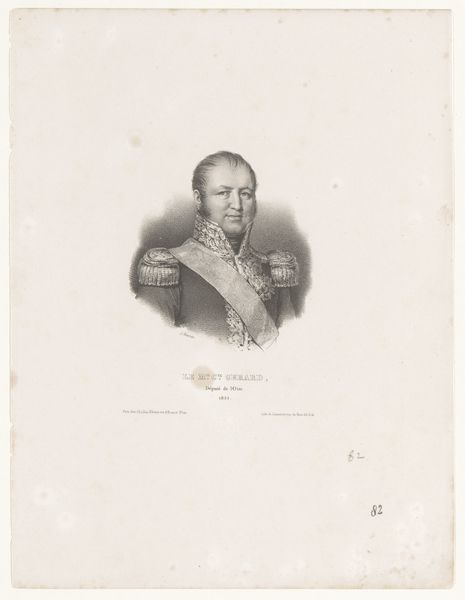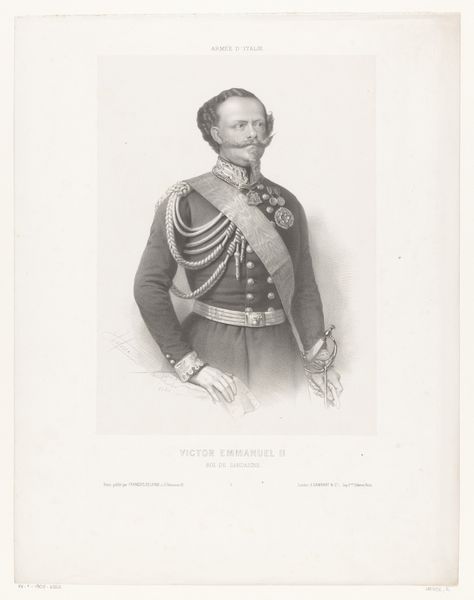
Portret van Willem II, koning der Nederlanden 1865 - 1884
0:00
0:00
print, engraving
#
portrait
# print
#
pencil drawing
#
history-painting
#
academic-art
#
engraving
#
realism
Dimensions: height 489 mm, width 411 mm
Copyright: Rijks Museum: Open Domain
Curator: This is a print titled "Portret van Willem II, koning der Nederlanden," or "Portrait of William II, King of the Netherlands." It was created sometime between 1865 and 1884 by Frederik Hendrik Weissenbruch and is currently held here at the Rijksmuseum. Editor: The first thing I notice is how contained it feels, that oval composition with the blank space around the central image, but his presence manages to escape its bounds—in what feels like an exercise in power and control. Curator: Indeed. Let's consider the structure. We have a carefully rendered portrait utilizing engraving techniques, notable for the minute details capturing King William II in full regal attire. It is an academic exercise in realistic portraiture. Editor: Look at how the artist contrasts the detailed uniform with the comparatively plain, almost understated face. This strikes me as rather insightful political commentary. He wants you to see past the ornaments to a specific man during a time of nation building. Curator: Quite astute! Weissenbruch strategically employs the artistic conventions of his time, embedding subtle indicators of social and historical contexts, which might go unnoticed without closer examination of the engraving details. The cross-hatching, the gradations in tone... These contribute significantly to the overall meaning, suggesting an aura of responsibility and authority. Editor: Yet that very detail creates a certain tension. Those shoulder details draw the eye up and around his face and medals as though he might be crushed by their weight. How does this image serve the monarchy at the time? Is he being honored or burdened by duty? Curator: Given the prevalent inclination towards nationalism at the time, it's logical to say this imagery aimed to cement his image within the Dutch historical narrative. Museums played a vital role in establishing public sentiment through these curated displays of monarchy, reinforcing ideals and propagating narratives. Editor: It seems as if the composition emphasizes these symbols to a degree that it almost detracts from portraying him as an individual. Perhaps it reveals an undercurrent in academic portraiture of the time. In their aim to flatter, how successful could they be at reflecting an individual's true spirit or depth? Curator: Perhaps this is precisely its success. This piece gives insight into both its sitter and also illuminates 19th-century notions regarding leadership through an enduring form, in service of a unified national narrative. Editor: A powerful assessment, indeed. And one I see with newfound appreciation now.
Comments
No comments
Be the first to comment and join the conversation on the ultimate creative platform.
